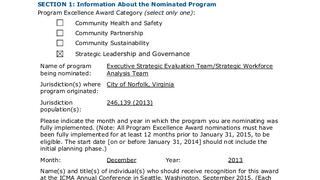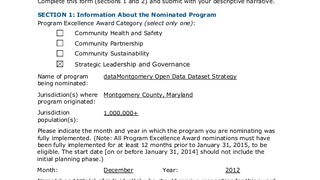Calls to 9-1-1 by Upper Arlington, OH, residents were not always emergencies, and many came from the elderly, who made up a third of the city's population. These calls placed a burden on the city's fire and EMS services and personnel. Elderly residents in Upper Arlington now have a valuable resource to get the help they need in non-emergency situations freeing the city's emergency medical services to handle emergencies.
When Leamon Brice arrived in Davidson in 1990, the town of 4,500 was directly in the path of a wave of growth advancing north from Charlotte.
A community came together to solve its problems with one project.
Paul Eckert began building relationships almost immediately after being appointed manager of Sioux City. One of the many groups that he joined was the local Chamber of Commerce's Governmental Affairs Committee. Before long, the city was an important part of the Chamber's legislative lobbying efforts and had its own unique campaign to focus on city issues.
If you were to create a new city from scratch, where would you begin? The city of Rancho Cordova, CA, was founded in 2003 and started by hiring one of the most innovative city managers in the country, making the town better for everyone.
Santa Monica, California<br />Keeping Santa Monica on the cutting edge was a priority for Former City Manager Rod Gould. Called “Silicon Beach”, Santa Monica has become Southern California’s technology hub with its concentration of startups, accelerators, incubators, coworking spaces and venture capitalists. Since March 2010, one of the key attractions that the City is able to…
In 2009, the city of Beverly Hills embarked on a strategic effort to strengthen its economic base by developing a five-year Economic Sustainability Plan.

This document is one of the nominations for the Strategic Leadership & Governance Program Excellence Award (populations 50,000 and greater).

This document is one of the nominations for the Strategic Leadership & Governance Program Excellence Award (populations 50,000 and greater).
